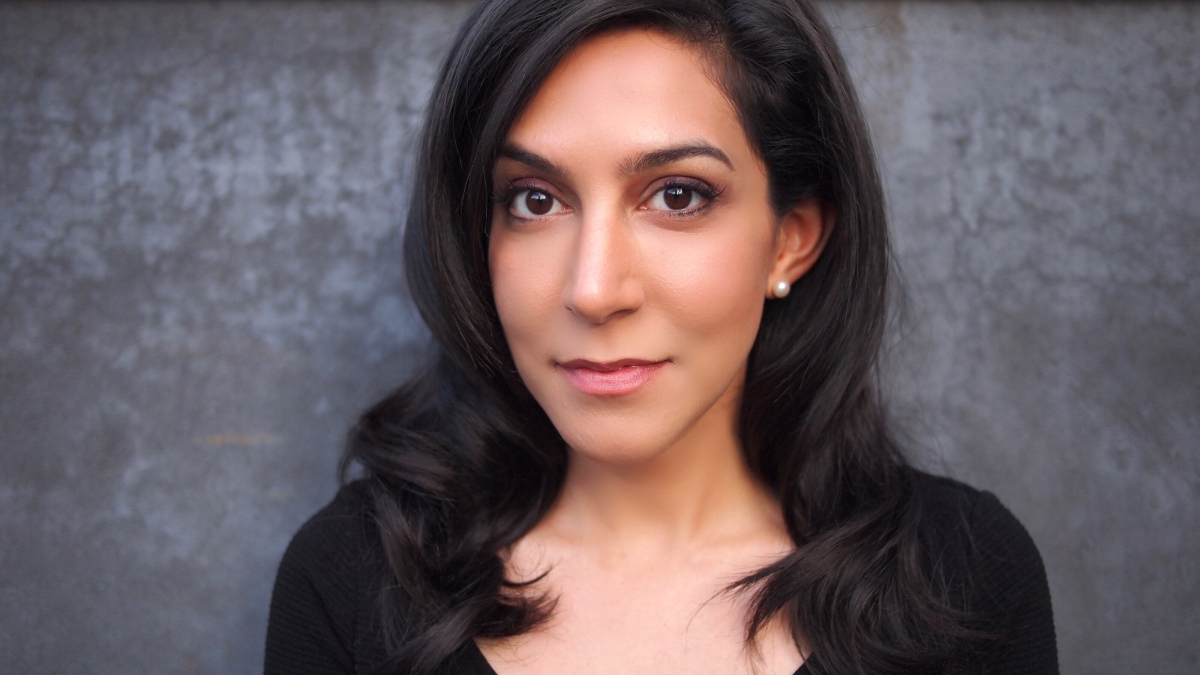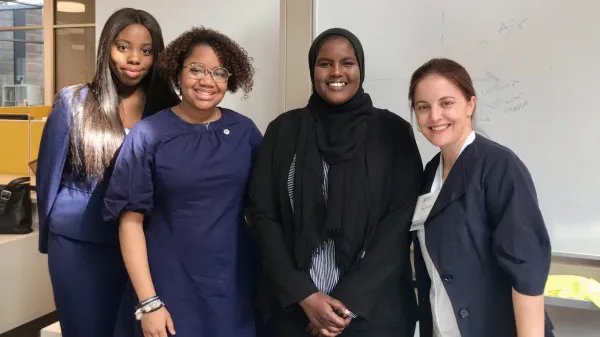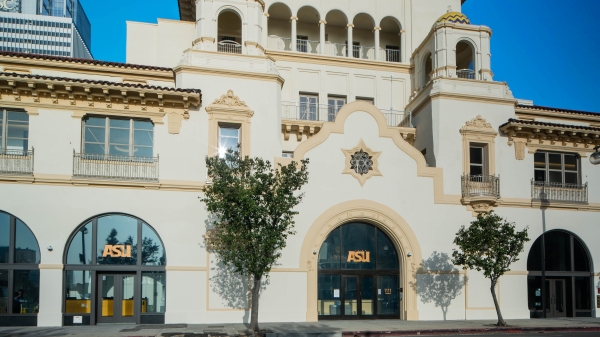New America journalist wins Carnegie Fellowship
ASU Professor of Practice Azmat Khan will use the $200K prize to focus on in-depth, investigative reporting

New America Fellow Azmat Khan says it's easy for Americans to ignore today's "precision" air wars — both because fewer U.S. combat troops are fighting on the ground and because the casualties are increasingly foreign populations.
Azmat Khan, an ASU Future of War Fellow with New America, has been named a winner of a prestigious Andrew Carnegie Fellowship.
Khan is a New York Times Magazine contributing writer, a professor of journalism and an investigative journalist who has won the National Magazine Award, the Hillman Prize and other honors.
As a member of the 2020 class of Carnegie Fellows, Khan will receive $200,000 to devote up to two years to significant research and writing. She is one of 27 winners this year, selected from a competitive pool of 322 nominations.
Providing one of the most generous research stipends of its kind, the Andrew Carnegie Fellows Program was established in 2015. The program represents a total investment of $38 million in some 200 recipients in support of high-caliber scholarly research across the social sciences and humanities. The selection criteria prioritize the originality and potential impact of a proposal, as well as a scholar’s capacity to communicate the findings with a broad audience.
ASU Now talked with Khan about the fellowship, her work and what the future holds for her.
Question: Tell us about the book you’re working on, what it’s about, where it’s taken you and what you’re learning.
Answer: “Precision Strike” — the book I’m working on for Random House — is a ground-level investigation into the true human costs and implications of America's “precision” air wars around the world. It is also an exploration of ways in which we might envision an alternative future.
Over the past several years, this work has taken me to Iraq, Syria, Afghanistan and Pakistan, where I have been investigating aerial bombing and civilian casualties on the ground, but the book expands into other countries and weaves scholarship with literary narrative following characters in the crosshairs of violence.
In terms of scholarship, I’m systematically studying data I’ve collected on the ground, as well as civilian casualty data I’ve obtained from the U.S. military through a Freedom of Information Act lawsuit. I’ve been learning so much about how often and why casualties are occurring, the long-term impacts of “mass casualty” incidents, and what the quality of intelligence underpinning this bombing is. But perhaps what I am learning from the most are the ways in which survivors grapple both with the loss of loved ones and the question of what life is worth.
Q: How do you feel about being recognized as a Carnegie Fellow, and what will be the immediate impact to your work?
A: It is an honor and will have such a meaningful impact on my work. It is rare to find substantial support for time-intensive investigative journalism today, particularly when working in war zones can be so costly. The fellowship will allow me to make critical reporting trips safely, replicate my work in other conflict zones, collaborate with others to collect and study data and invest in fact checking for the book. One thing I also hope to do during the fellowship is share data and methods with a select group of freelance investigative reporters who may be able to carry out similar work elsewhere.
Q: Why is it important for citizens to understand what’s happening in our air wars? And have these strikes been effective?
A: It is easy for Americans to ignore the wars happening in their names today. In part, this is a result of the shift to primarily conducting wars via aerial bombing. With fewer U.S. combat troops fighting wars on the ground, there is less attention on these wars from the news media and the general public — even though these wars continue at record pace. For example, the U.S. dropped more bombs in Afghanistan in 2019 than in any year of this 18-year war.
At the same time, there has also been a shift in who is paying the human costs of these wars; increasingly it’s foreign civilians. All of this means less accountability, less transparency and the erasure of the realities and harms of war on foreign populations. We can’t understand what is “effective” unless we know what is happening, and ground investigation in war zones is rare today.
That said, one of the things I hope to do in the book is go beyond the traditional parameters of how we understand what is effective. In policy circles, this question all too often comes down to whether the U.S. is achieving its end goals, and whether the costs or means are worth it. But we can't answer the question of whether aerial bombing is effective without considering what the ultimate purpose of the war is, and whether those purposes are just. A collective, democratic debate needs to happen on this question, but the reliance on air power is one way in which our population is completely inured from the reality of war and cannot participate in that debate in any meaningful way.
Q: You’ve been a fellow with ASU’s Center on the Future of War for several years now. What do you think of the work they do?
A: So many of the journalist colleagues I admire most have been fellows at the Center on the Future of War and New America. Consider Rania Abouzeid, Iona Craig, Azadeh Moaveni and Anand Gopal, to name just a few. All of them are freelance reporters whose work from Syria, Yemen, Iraq and Afghanistan has broken new ground in our understanding of war and the people who face its brunt. They produce award-winning journalism that takes more time and autonomy than a newspaper or investigations team would ever allow, and that high quality of work requires serious support, as well as sacrifice on the part of the reporters. All of them could have more comfortable positions as staff correspondents, but their work speaks for itself. I genuinely feel lucky to be able to learn from them.
Q: You’re also involved in a project called the Gumshoe Group. Tell us about that.
A: Some of the best accountability reporting didn’t come from leaks of classified information, but from hard-fought efforts to get government data through public records laws. Most of the time, reporters’ public records requests languish in queues for years or are denied outright, but journalists who are able to get legal assistance in pursuit of those records have a serious advantage. While staff reporters may have in-house counsel to turn to, freelance investigative reporters do not. Investigative journalist Seth Freed Wessler and I started the Gumshoe Group to help fill that gap. Over years, we both built up networks of lawyers who helped us file lawsuits and get the information we were fighting for. Gumshoe connects freelance investigative journalists with pro bono attorneys to help them do the same. It’s an under-resourced but vital segment of the journalism ecosystem, and though we only launched last year, I’m excited to see the journalism that comes from it.
More Law, journalism and politics

School of Politics and Global Studies director's new book explores mass violence
Why do people commit atrocities and why are certain groups, including religious and ethnic, more vulnerable to large-scale…

ASU faculty contributing to improvement of Wikipedia
Many academics have a love-hate relationship with Wikipedia. While the website has information about almost anything you can…

ASU Law students gain vital experience through Los Angeles location
Students at the Sandra Day O’Connor College of Law at Arizona State University may be concentrated in the school’s downtown…